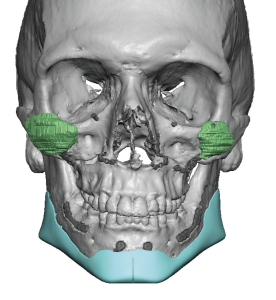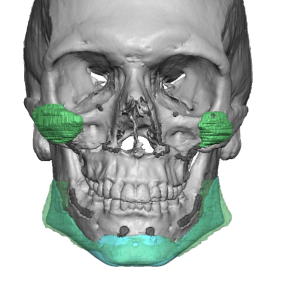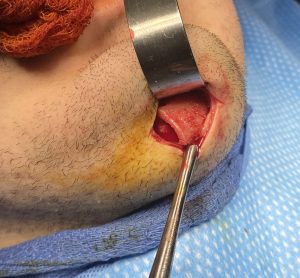Background: Custom jawline implants can be made of a variety of materials each with their own advantages and disadvantages. One of these materials is porous polyethylene or Medpor. It offers a firm soft tissue adhesion to its surface to which that advantage over other materials which do not develop this strong adhesion is not clinically clear. Be that as it may it does occur albeit more strongly on the outer surface of implant exposed to the overlying soft tissues. On the underside of the Medpor implant bone ingrowth does not occur but a thick capsule does develop.
Understanding these tissue reactions to Medpor material becomes more than of biologic interest if the need arises to either adjust the position of the implant or remove/replace it. Like any other facial implant this potential need is not rare and occurs equally amongst all implant materials. When this need arises it is an implant design (shape and size) issue and not one of its material composition.
This becomes most relevant the larger the implant is and a custom jawline implant represents one of the largest facial implants possible. Designing a new custom jawline implant to replace it is relatively easy since the indwelling implant provides the guidance to determine how to make a new jawline implant design better. Getting the Medpor jawline implant out poses the challenge but understanding its enveloping tissue reaction to its surface provides the technical manuevers in doing so.

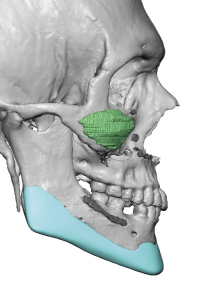
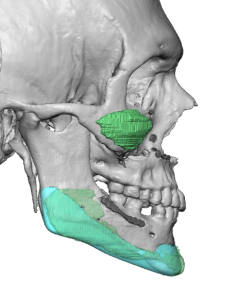
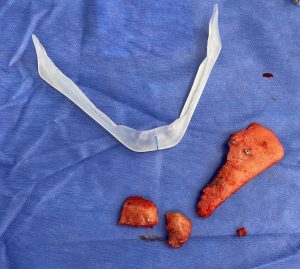
The entire remaining Medpor implant was able to be removed and the new custom jawline implant placed.
As a facial implant material the limitations of Medpor are its rigidity and soft tissue adherence. Both of these material characteristics may have certain advantages but when it is needed to be removed they are disadvantages. It is one thing to remove an isolated chin or jaw angle Medpor implant but another when it is an entire wrap around jaw implant. While it can be successfully removed it takes experience to avoid inadvertent neurovascular structure damage. Part of that is knowing what can happen which is the best way too avoid it.
Case Highlights:
1) A prior custom jawline implant design goes a long way in determining how to make an improved jawline implant replacement design.
2) Medpor jawline implants can be technically challenging to remove but there are various maneuvers that can make it a successful explantation.
3) The tissue pocket created by a Medpor jawline implant removal is usually more than adequate for the new jawline implant placement.
Dr. Barry Eppley
Indianapolis, Indiana





